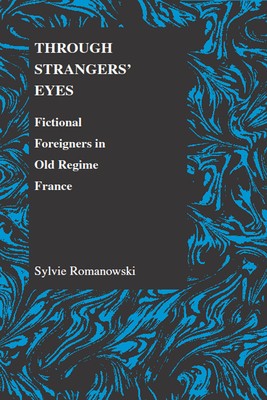
- We will send in 10–14 business days.
- Author: Sylvie Romanowski
- Publisher: Purdue University Press
- Year: 2005
- Pages: 257
- ISBN-10: 1557534063
- ISBN-13: 9781557534064
- Format: 15.4 x 23.2 x 1.6 cm, minkšti viršeliai
- Language: English
- SAVE -10% with code: EXTRA
Reviews
Description
In the eighteenth century, a type of novel flourished showing naive outsiders who come to Europe and are amazed at what they see. Foreign travelers first setfoot in Europe in the sixteenth century and are memorably present in Montaigne's essay Des Cannibales. The genre was made popularin France by Montesquieu's novel Lettres persanes. Considering the stranger as a figure of ambiguity, Sylvie Romanowski explains why the genre was so useful to the Enlightenment. The question of why showing ambiguous stranger is important in that period is addressed in the book's introduction by setting the Enlightenment in the historical context of the seventeenth century. Romanowski then examines Montaigne's Des Cannibales, showing how these first outsiders relate to their eighteenth-century successors. She next considers Montesquieu's Lettres persanes in its entirety, studying the voices of the men, the women, and the eunuchs. She also studies other examples of the genre. The author closes with a discussion of the philosophical tension, ongoing in Western thought, between skeptics and those who, refusing skepticism, seek firm foundations for knowledge, this draws connections between the sixteenth century, and our postmodern era.
EXTRA 10 % discount with code: EXTRA
The promotion ends in 21d.19:11:27
The discount code is valid when purchasing from 10 €. Discounts do not stack.
- Author: Sylvie Romanowski
- Publisher: Purdue University Press
- Year: 2005
- Pages: 257
- ISBN-10: 1557534063
- ISBN-13: 9781557534064
- Format: 15.4 x 23.2 x 1.6 cm, minkšti viršeliai
- Language: English English
In the eighteenth century, a type of novel flourished showing naive outsiders who come to Europe and are amazed at what they see. Foreign travelers first setfoot in Europe in the sixteenth century and are memorably present in Montaigne's essay Des Cannibales. The genre was made popularin France by Montesquieu's novel Lettres persanes. Considering the stranger as a figure of ambiguity, Sylvie Romanowski explains why the genre was so useful to the Enlightenment. The question of why showing ambiguous stranger is important in that period is addressed in the book's introduction by setting the Enlightenment in the historical context of the seventeenth century. Romanowski then examines Montaigne's Des Cannibales, showing how these first outsiders relate to their eighteenth-century successors. She next considers Montesquieu's Lettres persanes in its entirety, studying the voices of the men, the women, and the eunuchs. She also studies other examples of the genre. The author closes with a discussion of the philosophical tension, ongoing in Western thought, between skeptics and those who, refusing skepticism, seek firm foundations for knowledge, this draws connections between the sixteenth century, and our postmodern era.


Reviews